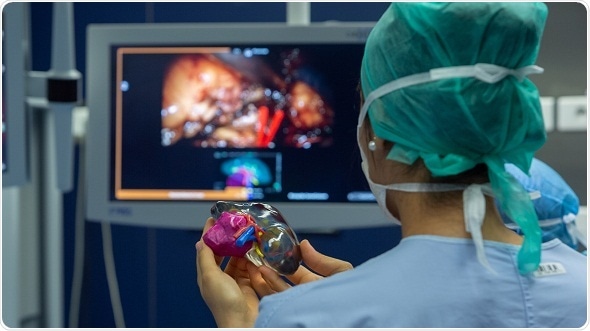
Bordeaux University Hospital uses 3D printing to improve kidney tumor removal surgery
Bordeaux University Hospital (CHU) in France is leading the charge to improve success rates of complex kidney tumor removal surgery, thanks to unique full-color, multi-material 3D printing technology. The CHUis currently one of the only hospitals worldwide to use a Stratasys J750– the world’s only full-color, multi-material 3D printer – for complex kidney tumor removal cases.

The clearer view offered by a transparent, full-color 3D printed model increases the ability to perform precise and successful kidney-sparing
The surgical team at the CHU’sDepartment of Urology and Kidney Transplantationis3D printing life-like transparent and color models of the patient’s anatomy to help perform precise and successful kidney-sparing surgery and improve patient outcomes.
Jean-Christophe Bernhard, Urology Professor at Bordeaux University Hospital, says the clearer view offered by the 3D printed model helps identify and avoid damage to the delicate nearby arteries and vessels which, in the case of complex or high-volume tumors, can result in a patient’s kidney being completely removed.
Sparing the patient’s kidney is important because it reduces the chance of subsequently suffering from chronic kidney disease.
The 3D printed models are also used to enhance the explanatory process towards patients, as well as improve surgeon training.
Support from patients
One such patient is Carole Ridel, who recently underwent surgery at the CHU. “I was shown a 3D printed model of my kidney prior to my operation and instantly felt more reassured than I had been before surgeries I had undergone in the past,” she explains. “Seeing such a realistic representation allowed me to understand the process much better than an MRI scan. I noticed that the tumors were on the external wall of the kidney, rather than inside the organ itself, so I was comforted by realizing the situation wasn’t as bad as I had imagined.”
Collaborative project to improve communication with patients
Using its J750 3D Printer, CHU also recently created a collaborative research project entitled Rein 3D Print, which aims to determine whether boosting patient understanding of their surgical procedure can improve ambulatory care (same-day surgery that doesn’t necessitate an overnight stay). According to Prof. Bernhard, 3D-printed model shave contributed to the success of this pilot protocol and have reduced patient hospitalization times during pre-surgery planning.
The deployment of the J750 has been enabled thanks to funding from three partners: the European Union, the Regional Council of Nouvelle Aquitaine and the Bordeaux University Foundation, of which the CHU is a part.
Source:





















.png)









No hay comentarios:
Publicar un comentario